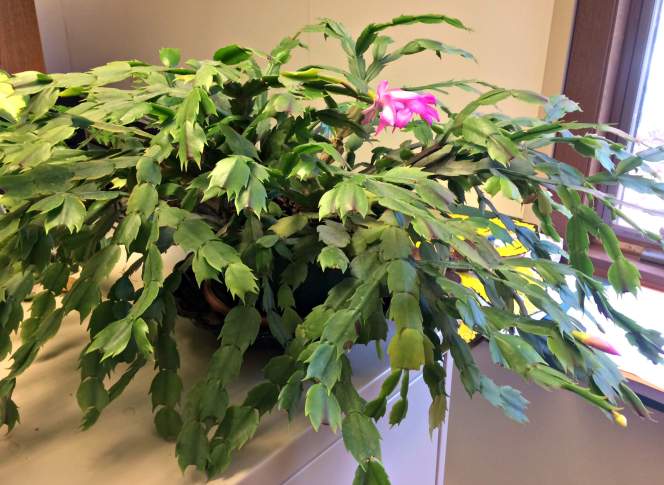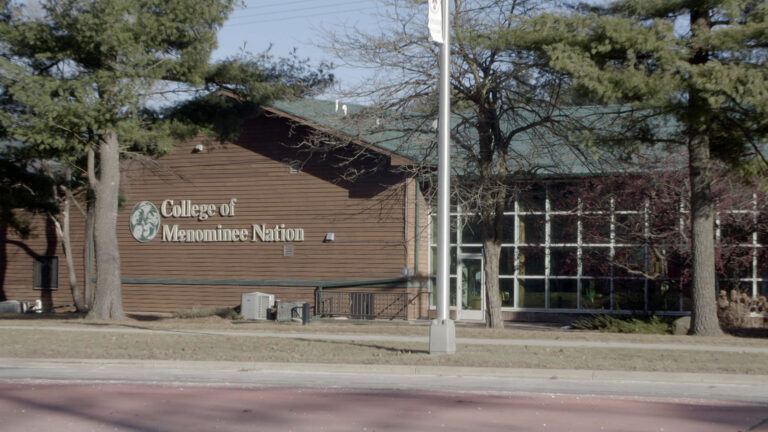Helping Houseplants Brighten A Long Midwestern Winter
Houseplants add life and beauty to home and work environments. They filter indoor air pollutants, their vivid colors, textures and fragrances serve as a natural stress relievers, and maintaining them over a cold, dark winter can gratify a gardening urge.
December 27, 2016

Christmas cactus next to window

Houseplants add life and beauty to home and work environments. They filter indoor air pollutants, their vivid colors, textures and fragrances serve as a natural stress relievers, and maintaining them over a cold, dark winter can gratify a gardening urge.
Many houseplants are native to tropical regions, so they prefer abundant sunshine, and warm and humid conditions. With the upper Midwest’s shortened day length and colder temperatures in winter, many tropical houseplants shed their leaves and lose their vibrant color. But a few indoor modifications can help them thrive through winter.
To provide appropriate conditions for houseplants, indoor day time temperature should be kept in the range of 65-75 degrees Fahrenheit and night temperature about 60-65 degrees. Tropical foliage plants should not be placed too close to a window frame or hot air vent.
Light is the biggest limiting factor for many houseplants. Depending on their light tolerance level, houseplants should be placed near (but not too near) windows or under artificial light.
Plants that can adapt to low lights – such as Chinese evergreen, grape ivy, philodendron, peace lily, Boston fern and rubber trees – can be placed near north-facing windows. Flowering houseplants like Christmas cactus, cyclamen, African violet and amaryllis will do best near east-facing windows, as they need cooler temperature and indirect light for the most of the day.
Foliage and xerophytic (water-conserving and storing) plants like cactus, succulents, jade plant, citrus, coffee, schefflera and hibiscus need direct light and can perform well near south-facing windows. Houseplants like ficus, croton, ponytail, spider plant and mother-in-law’s tongue can adapt under light levels near a west-facing window, which receive indirect light during morning and direct light in mid to late afternoon.
In cases where plants cannot be set near windows, a reflective mirror can be placed at a suitable angle to direct light towards them. Regular fluorescent lights can also be used on some houseplants (such as African violets) to induce their bloom or to sustain foliage growth.
Many tropical houseplants require minimum humidity of 40 to 60 percent. When humidity is less than 25 percent, plants may exhibit symptoms like brown leaf tips and edges, bud drop and curled leaves. Spaces with many houseplants may require the use of a humidifier. Also, plants can be grouped to foster micro humid conditions by placing them on a wide tray filled with water and stones or other objects that keep the bottoms of pots above the water line.
To water or not to water? It is critical to avoid frequent and overwatering of houseplants during winter periods.
To determine when to water plants, the indoor gardener can poke a finger to about an inch into the container media to feel the moisture status. Or the surface of the potting soil can be scraped and rubbed the between the fingers. If it feels pretty dry like a powder, then the plant needs water. Tepid water should be poured gently over the soil media until it drains out to the saucer pan underneath the container. After 15 minutes or so, the drained water should be removed from the pan.
Finally, houseplants should not be frequently fertilized during winter.
Vijai Pandian is a horticultural agent and educator for the University of Wisconsin-Extension Brown County. This article is adapted from an item originally published by the Green Bay Press Gazette.
More Wiscontext

 Passport
Passport













Follow Us